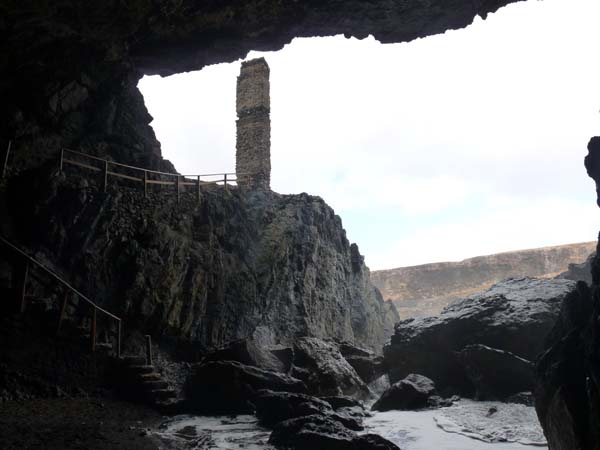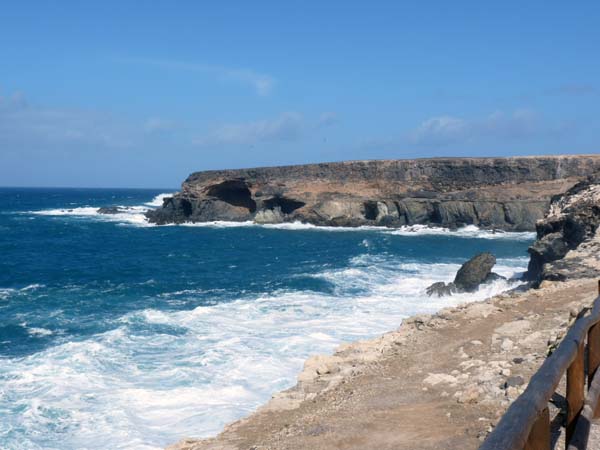VILLAVERDE
Cueva del Llano
Cueva del Llano
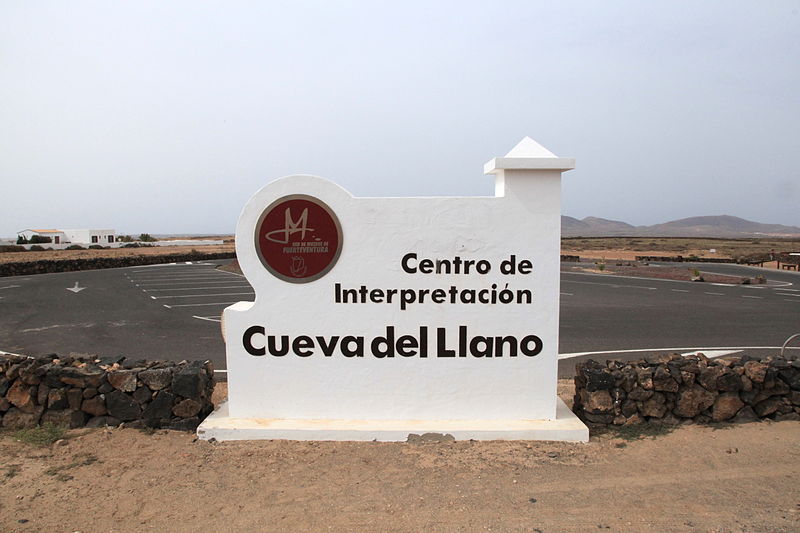
La Cueva del Llano is a volcanic tube of considerable dimensions situated close to the village of Villaverde. A jameo is the local term used for an entrance to a lava tube and the jameo at Villaverde is an entrance to a passage that divides into two branches; one goes north and the other towards the south. The north branch is 500 meters long and 400m of this are developed with paths and electric light. The lava tube was formed by a lava stream from the Mt. Escanfraga. Mt. Escanfraga is one of a chain of craters, which is typical for Fuerteventura. This chain was formed more than 690,000 years ago, which would mean that this cave is of extraordinary age for a lava tube. The tube was dated to be of Pleistocene age; lava tubes are generally only a few thousand years old, as they are destroyed fast by erosion.
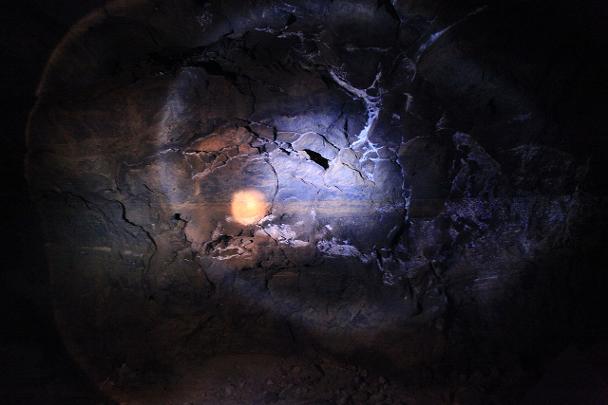
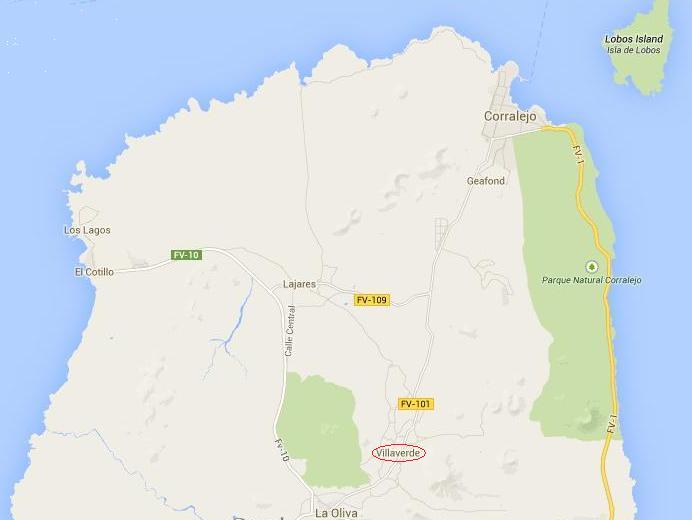
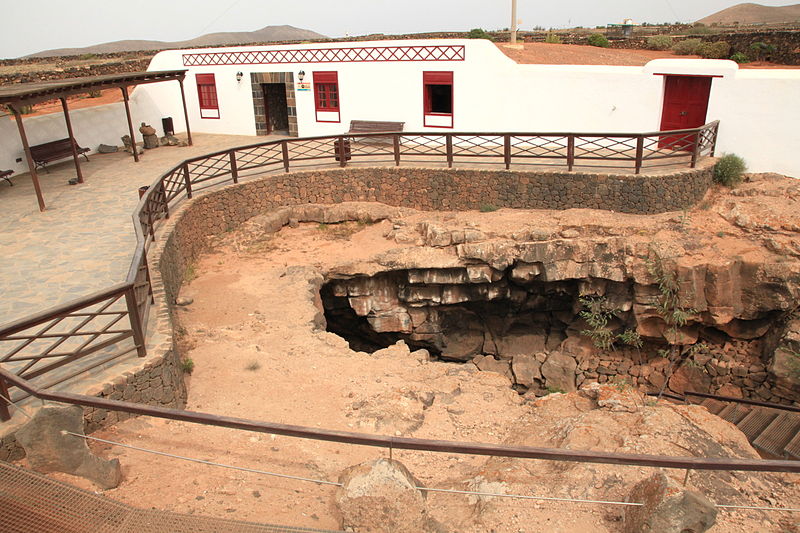
The jameo at Villaverde was developed by the Cabildo of
Fuerteventura to protect it and to make it a tourist destination.
The cave is famous for endemic troglobionts, which are portrayed in the little museum at the entrance. In a study realised by the University of La Laguna, an endemic spider was discovered that lives in the last part of the north branch; in fact two new endemic spiders live here, one only known from this cave. One was named Maiorerus randoi Rambla, which seems to be a new genus, or even family of spiders, not only a new species. The other spider, Spernophorides fuertecavensis Wunderlich is also a true troglobiont, but does not show the same intense adaptation to the lightless environment. In the south passage interesting vertebrate fossils, and sub fossil gastropods were found.
The cave is famous for endemic troglobionts, which are portrayed in the little museum at the entrance. In a study realised by the University of La Laguna, an endemic spider was discovered that lives in the last part of the north branch; in fact two new endemic spiders live here, one only known from this cave. One was named Maiorerus randoi Rambla, which seems to be a new genus, or even family of spiders, not only a new species. The other spider, Spernophorides fuertecavensis Wunderlich is also a true troglobiont, but does not show the same intense adaptation to the lightless environment. In the south passage interesting vertebrate fossils, and sub fossil gastropods were found.
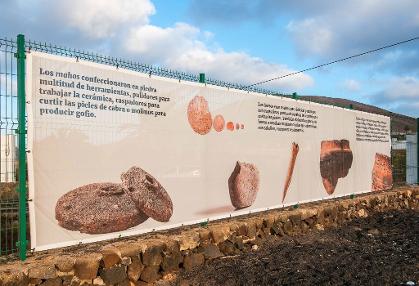
About 1km from the cave, towards Villaverde, at the bus stop next to the restaurant El Horno, lies the undeveloped cave Cueva de Villaverde. This lava tube is 190m long, and was discovered in 1979 during construction work. It is of great archaeological interest, and contained stone and bone tools, hand mills, ceramics, jewellery made of shells, and the remains of fireplaces. The remains of land and sea animals show that it was inhabited between 300 and 1400 AD. It was also used to bury people, two skeletons, of an adult man and a child, were found in the cave.
The cave is under investigation and study, so not yet open to the public
The cave is under investigation and study, so not yet open to the public
AJUY
La Caleta Negra
La Caleta Negra
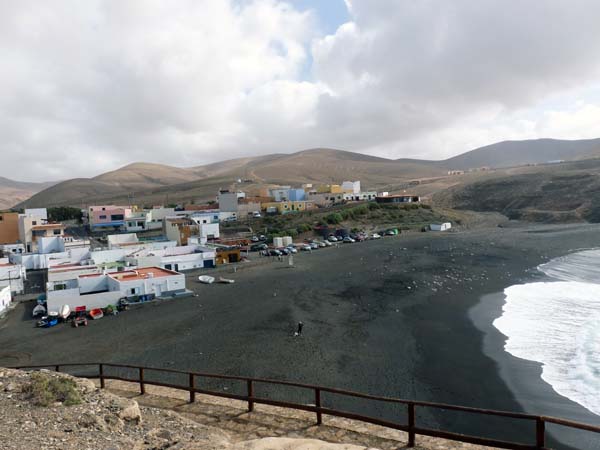
La Caleta Negra (Black Bay) is north of Ajuy; it is reached by foot on a well-maintained coastal trail; it starts at the northern end of the bay of Puerto de la Peña and follows the cliff.
After about half a kilometer, (15 minutes walk,) is a fabulous outlook, which shows views of the coast, the sea, and the caves.
After about half a kilometer, (15 minutes walk,) is a fabulous outlook, which shows views of the coast, the sea, and the caves.
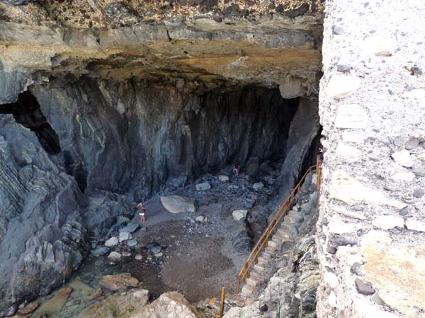
There are walls and ruins, which are the remains of
limekilns, this is one of the few places on the Canarian islands where
limestone is found.
The volcanic islands generally do not have this kind of sedimentary rock. As limestone and especially lime and cement are important for many purposes, the limestone here was mined, burned to lime and exported from the nearby quay towards other islands, especially Gran Canaria.
The lime export ended in the 19th century, but the lime burning continued to the mid 20th century. The limestone of this area is extremely pure and thus rather valuable.
The volcanic islands generally do not have this kind of sedimentary rock. As limestone and especially lime and cement are important for many purposes, the limestone here was mined, burned to lime and exported from the nearby quay towards other islands, especially Gran Canaria.
The lime export ended in the 19th century, but the lime burning continued to the mid 20th century. The limestone of this area is extremely pure and thus rather valuable.
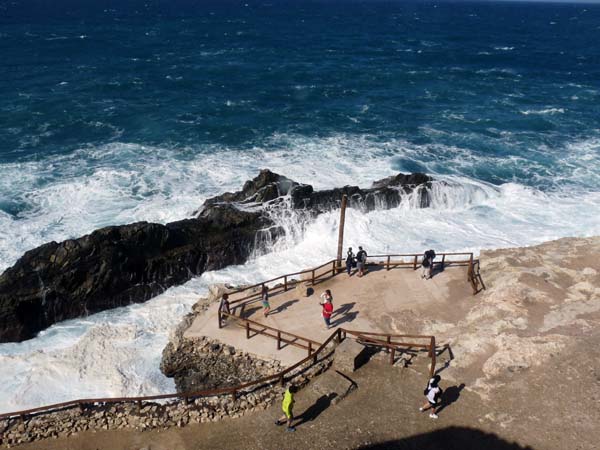
The caves of this bay, numerous huge entrance portals,
are open for visitors, a narrow trail goes down to the sea and the
caves. It is easy to find the huge entrance and visit a 600m long
horizontal cave. Good shoes and lamps, are a good idea and of course
someone outside who knows where you are and will call for rescue if you
do not come back. If this sounds too dangerous, you may ask in one of
the nearby restaurants for a guide, locals often guide visitors into the
cave and a tip is much appreciated.
